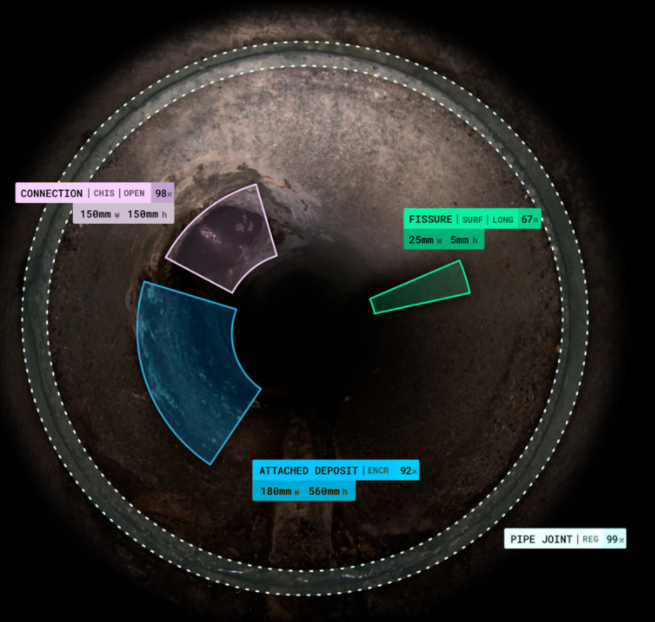The overall impacts of climate change and environmental issues are becoming increasingly apparent, making the importance of recycling, waste management and efficient utilisation of waste to grow. An example can be found nearby: the eutrophication of the Baltic Sea is one of the most serious environmental problems in Finland, thus the current objective is to reduce the load on the sea, eutrophying emissions and environmental risks (The foundation of John Nurminen 2020).
AI is already being applied today in the waste sector in areas such as predicting the filling of recycling points, the timing and optimisation of emptying routes and the separation of waste fractions (Salmi 2020). AI can support the environmental care processes for example through automation. There is a high demand for trained technicians in the environmental services sector. The effects of AI and automation would quickly become significant if the same job could be done by five people instead of ten. One application of AI is in the field of sewer condition monitoring, which has seen a surge in demand over the past decade.
Case: condition surveys of sewerage networks using machine vision
The Finnish company Hurrikaanit Ympäristöhuolto participated in the AI-TIE Clean Industry AI Accelerator in 2021-2022, where key AI application areas from a business perspective were brainstormed. The company founded in 1964 is an environmental maintenance professional whose core business is sewer openings, sewer well drains, pumping station cleaning and sewer condition surveys. From an environmental management perspective, Hurrikaani’s operations are impressive: for example, Hurrikaanit delivered around 20 000 tonnes of waste for treatment in 2019, which is equivalent in weight to more than 1 000 buses.
Especially, a lot of expert work and working hours are spent on surveys of the condition of sewerage networks. Hurrikaanit mainly carries out surveys of sewers in households and properties. The survey is carried out by taking a video camera inside the pipe, after which an expert carefully reviews the video footage. The video shows the overall condition of the pipe and identifies various types of damage, which can be very subtle, such as a nail that has gone through the pipe. Filming a typical sewer pipe is a lengthy process, and the analysis requires care and a keen eye. The Hurrikaanit usually trains the experts themselves for this task.
Video-based condition assessment of pipes requires a lot of expert time, but on the other hand it is a straightforward analysis of video data, so the application possibilities of artificial intelligence are basically good. Over the years, Hurrikaanit has accumulated a wealth of proprietary sewer imaging data that could be exploited. In fact, The Hurrikaanit quickly identified two of the best-known companies in the field, the American SewerAI and the Swiss HadesAI and decided to contact the latter. This was due both to their geographical location and to the fact that the European operator is better informed about the requirements and standards for European (Finnish) sewer pipes.
Utilization of the finished AI product
The HadesAI system works as follows: the sewer pipe is washed, after which it will be videotaped by a sewer camera. The videomaterial and pipe data are uploaded to the application, based on which AI system analyses the data and identifies visible damages and potential problems in the pipes. The expert will receive an automatically generated report for review, which will be proofread. The system utilises neural networks trained with millions of different images collected from hundreds of sites around the world to identify more than 300 different types of damages. The system has been made as easy as possible to use through an app and a cloud service. The expert still must go through the results carefully but can focus on the problem areas identified by the AI instead of going through the entire video footage in detail and manually marking the problem areas. The time savings are therefore significant, and the availability of experts does not become a bottleneck for the business.
After the first contact at Hurrikaanit it was decided to test the system with their own data. At this stage, they collaborated with an artificial intelligence company Mindcom which is based in Kuopio. The results of the preliminary data analysis are promising, and the system was able to independently identify the most typical problem areas in the pipes.

Conclusions:
- In AI application areas, the data, its quantity, quality and suitability for the AI use case need to be taken into account. In the given case study, a lot of data on sewer condition surveys had been accumulated as part of the company’s daily operations.
- There are already numerous examples of AI being applied in environmental management today, such as predicting the filling of recycling points, timing and optimising emptying routes, and separating waste fractions. There are still a lot of potential, and the solutions can be unique and generate high business value. With these a company can both maintain competitiveness and find new areas for growth and competitive advantage.
- The application of artificial intelligence in clean industry companies brings wider support to the green transition and enables its practical implementation.
Translated from the Finnish by Sari Benford and Petteri Saloranta.
Sources
The foundation of John Nurminen 2020. Hurrikaanit mukana pelastamassa Itämerta 30 000 euron lahjoituksella. Accessed: 4 April 2022.
Salmi, L. 2020. Tekoäly yleistyy vauhdilla. Jäteplus 1/2020.